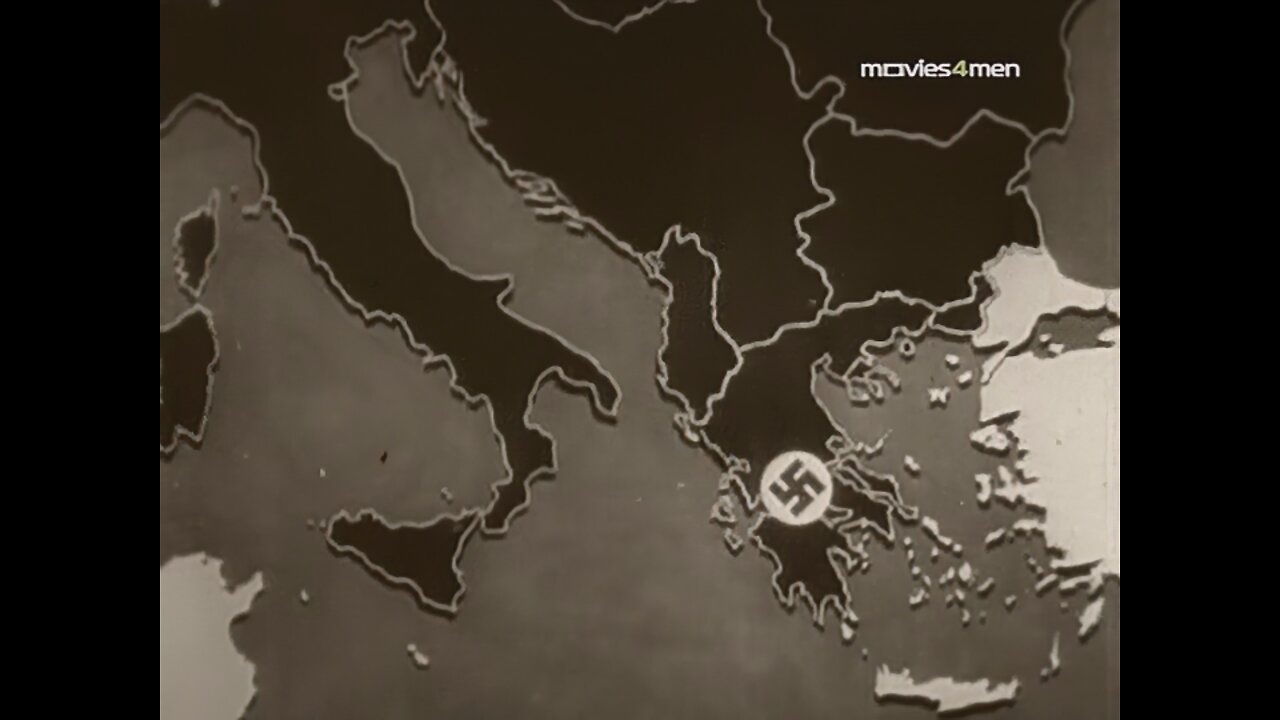Premium Only Content

The Battle of Crete - Operation Mercury -SD
Hitler’s invasion of Crete followed hot on the heels of his devastating campaign on the Greek mainland. Forewarned by Ultra, General Freyberg prepared to meet the attack at several locations across the island (right). Major airborne assaults at Rethimno and Iraklio, and a smaller one at Kastelli, were contained. West of Hania, however—the preserve of 2 New Zealand Division—the Germans gained toeholds at Maleme airfield and in Prison Valley (below). After an unsuccessful attempt to retake the airfield, the New Zealanders fell back to the east, along with other Allied forces from the Hania–Souda area. Despite fearless resistance, notably at Galatos, 42nd Street and Stilos, retreat to the south coast and evacuation by the Royal Navy offered the bulk of Freyberg’s army its only chance of escape. For many, even this proved a forlorn hope, roughly a quarter of the total force falling prisoner. Resistance to the German (and Italian) occupation of Crete was intense, but liberation came only in 1945.
https://www.nzgeo.com/stories/crete/
In May 1941 the German Luftwaffe conducted the first purely airborne invasion of an island in history. Although German airborne forces would seize the island of Crete their operational objective, the operation was accomplished at great risk of failure and at great cost in personnel and resources due to the lawed application of operational art. Operation Mercury was an operational objective of opportunity following unexpectedly successful operations in Greece and Yugoslavia. With only three weeks to plan and prepare prior to execution, improvisation and compromise would characterize the attack. although the operation ended in the seizure of Crete, the cost in lives and resources would prevent Hitler from ever again risking his airborne forces in a major airborne operation. This case study reviews the broad strategic setting surrounding the operation and provides an analysis contrasting German planning and preparation with execution. Through an examination of the operational factors of space, time, and force, an analysis of the operational functions of operational command and control, intelligence, and fires, and an examination of vertical envelopment as a form of operational maneuver, on can derive significant lessons learned applicable to todays forced entry operations.
-
 1:00:20
1:00:20
The Tom Renz Show
1 day agoTrump Schools Zelensky, The Epstein Files FAIL, & What RFK Will Mean for Cancer
66.6K21 -
 42:47
42:47
Kimberly Guilfoyle
15 hours agoThe Trump effect: More Major Investment, Plus America First at Home & Abroad. Live w/Ned Ryun & Brett Tolman | Ep. 201
146K41 -
 1:29:23
1:29:23
Redacted News
13 hours agoWW3 ALERT! Europe pushes for war against Russia as Trump pushes peace and cutting off Zelensky
178K298 -
 57:56
57:56
Candace Show Podcast
17 hours agoHarvey Speaks: The Project Runway Production | Ep 1
167K107 -
 56:31
56:31
LFA TV
1 day agoEurope’s Relationship With America Is Over | TRUMPET DAILY 3.3.25 7PM
52.6K11 -
 2:04:45
2:04:45
Quite Frankly
15 hours ago"European Deth Pact, Blackout Data Breach, Epstein" ft. Jason Bermas 3/3/25
51.7K22 -
 1:32:46
1:32:46
2 MIKES LIVE
12 hours ago2 MIKES LIVE #187 Deep Dive Monday!
29.8K2 -
 44:25
44:25
CatfishedOnline
13 hours ago $2.15 earnedRacist Lady Shocked After Sending Money to a Nigeria Romance Scammer
37.1K6 -
 56:45
56:45
VSiNLive
13 hours agoFollow the Money with Mitch Moss & Pauly Howard | Hour 1
57.1K2 -
 2:28:18
2:28:18
Nerdrotic
16 hours ago $6.88 earnedOscars Aftermath | Super Chat Square Up - Nerdrotic Nooner 469
69.9K19